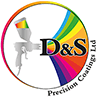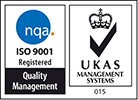Paints
Epoxy powder
Epoxy powder coating is one of several different types of powder coating available.
Choosing the right powder coating depends on what your intended purpose for it is.
Some types of powder coating are more durable than others, and some are more suited to external use than others.
Here, we explain what epoxy powder coating is, where and how to apply it, and how it compares to other powder coatings.
What Are Epoxy Powders?
Epoxy powder coating use epoxy resins within the powder coating mix.
Epoxy is an organic compound. It is made up of carbon chains that are linked to other elements, such as hydrogen, nitrogen or oxygen.
This type of link is a covalent bond. This chemical bonding is a link between atoms, through the electrostatic attraction of their nuclei.
Characteristic physical properties of covalent compound materials include lower melting points and electrical conductivity.
Consequently, epoxy powder coating has a good mechanical resistance and can stand up to various environmental challenges, including high temperatures.
Epoxy is created through the polymerisation or combination of resin hardeners with a catalyst, producing a material with mechanical and chemical strength.
Variations in the epoxy curing process lead to different properties in epoxies, which, when modified, can provide improved thermal insulation and thermal conductivity.
What Are the Benefits of Epoxy Powder Coating?
Epoxy powder coatings provide tough, durable and resilient coatings for metal. They are well-suited to applications where there is a requirement for a hard, electrical insulating coating, or where there surfaces will be subject to a wide range of temperatures.
- Epoxy powders produce an exceptionally hard finish, which makes the surfaces they coat resistant to impact and abrasion.
- Epoxy powder coating also provides an effective barrier against corrosion.
- It is effective as a high dielectric insulator, when applied to copper or aluminium conductors, and is useful in reducing the need for time-consuming and expensive lamination processes.
Where Can You Use Epoxy Powder Coating?
Due to its resistance to corrosion and harsh chemical, epoxy powder coating is used as a metal protector for a wide variety of applications:
- It coats pipelines, pillars and poles
- Epoxy powders protect steel rebars in high-load-bearing structures
- Its anti-corrosion properties work for marine structures and vessels
- Epoxy powder coating protects industrial furniture, for when it is exposed to aggressive cooling, and cleaning and lubrication fluids
- Epoxy powder coating is applied to household goods such as washing machines, refrigerators, microwaves and stoves.
What are the Properties of Epoxy Powders?
- Many epoxy powder coatings can be used at temperatures of 150°C or higher
- In thicknesses over 10 mils (250 µm), they have a dielectric strength of up to 12,000 volts/mil
- They are resistant to corrosion and to most solvents and mild acids
- Epoxy powders have excellent adherence to metal substrates, and in many situations do not require a primer.
Are There Other Types of Epoxy Powder Coating?
As well as epoxy powder coating, there are also epoxy-polyester powder hybrid coatings.
These hybrids combine epoxy and polyester resins in a powder which retains many of the same characteristics as epoxy powder coating.
They do, however, contain a high proportion of polyester, sometimes over 50%.
These hybrid coatings are tough and durable, and are often competitively priced. They deteriorate more slowly than epoxy powder coatings when exposed to outdoor elements.
However, they may also be less resistant to chemicals and solvents compared to epoxy powders.
They are a popular choice for all round performance.
What Makes Epoxy Powder Coating Different?
There are two broad categories of powder coating:
- Thermoplastic
- Thermosetting
Both types of powder will melt when exposed to heat. However, thermoplastic powder coatings retain the same chemical composition under heat.
On the other hand, thermosetting powder coatings will also crosslink chemically when they melt and flow together.
This means that in thermosetting coatings, the finished coating has a different chemical composition to the coating in powder form.
Epoxy powder coating is a thermosetting coating.
Polyester Powder
Polyester powder coating, or PPC, is an alternative to liquid paint.
It leaves a hard, smooth finish that has corrosion-resistant qualities.
PPC is fast and cost-effective and is ideally suited for external use on architectural projects or on everyday items such as windows, doors, home appliances and metal furniture.
it also has environmental benefits.
Types of polyester powders
PPC provides flexibility combined with mechanical and impact resistance.
They are well-suited to both internal and external applications.
Standard polyesters will have up to thirty years of good UV resistance
There are also super-durable polyesters, providing a longer lasting colour and gloss than standard polyester finishes.
They too are suitable for both internal and external finishes.
Why apply a polyester powder coating?
While some decorative or premium sheet metals do not necessarily require a finish, others will benefit from an external finish for these main reasons:
- Protection against corrosion
- Decoration
- Functional reasons, such as anti-graffiti coating
Paint finishing in some form is a popular choice of a coating across a broad range of industries.
PPC is the most common option because it offers major benefits:
- Powder coatings provide finishes to metal and other substrates that are both strong and look good
- They give the kind of uniform finish you cannot always achieve with liquid paint, providing coverage to complex shapes
- A powder coating will reach where there are awkward angles, curves or hidden surfaces to cover
- The curing of the powder coating melts and hardens it to give a tough finish. It has a long life, protecting against corrosion, and maintains its appearance for years to follow
Is polyester powder coating cost-effective?
Typically PPC is much cheaper than its equivalent in liquid form, for several reasons:
Powder coatings provide an even, complete finish on all objects, therefore removing any further costs to rectify imperfections
It minimises waste – any polyester powder coating that is not used, or is over-sprayed, is recoverable and reusable
Compliance is low-cost due to there being no solvents involved in PPC applications.
How adaptable is polyester powder coating?
Polyester powder coating technology is extremely flexible as a paint application process.
It can be tailored to a specific brief for whatever material requires coating.
People choose polyester powder coating for a variety of reasons:
- Longevity
- Appearance
- Protection
- Maintenance or renovation
If you choose a polyester powder coating, it will be thicker than traditional liquid paints.
It provides a uniformity of finish with no drips or runs, which means both horizontally and vertically coated surfaces will look the same.
The promise of an even finish applies to fabrications of all sizes and shapes.
PPC is especially effective as a finish for metal parts with its strength, long life and resistance to fading, wear and abrasion.
It is a proven paint solution that is the first choice of designers, architects and manufacturers.
PPCs come in different colours, including BS4800, BS381C, RAL and NCS and metallics. Finishes include matt, semi-gloss, gloss and textured.
What are the environmental benefits of PPC?
There are virtually no volatile organic compounds emitted in polyester powder coating because it uses no solvents during the coating process.
That makes them safer to work with, to transport and to dispose of.
PPC is a clean technology compared to liquid paint.
The process also minimises waste because any overspray is reusable.
Two-pack polyurethane wet paint
Two-pack Polyurethane paint acts as a perfect topcoat and is specifically designed to stand up to weathering and UV exposure. A range of polyurethane coatings are available, all of which offer slightly different properties such as durability and flexibility.
We offer the two-pack polyurethane paint as a final coat over two-pack epoxies, creating a hard durable surface that resists saliferous, corrosive atmospheres, found in places such as chemical and oil refineries.
Two- pack Epoxy wet paint
Two-pack epoxy is a durable paint that provides the surface with an even protective layer.
The two-component paint is easily applied and offers outstanding chemical and water resistance, perfect for use in industrial and commercial environments.
We can apply a range of epoxy materials such as zinc rich & high build zinc phosphates right through to glass flake epoxies.
It is incredibly important that before a surface is painted, to maximise the potential of the paint the surface must be thoroughly cleaned and prepared.
PTFE Coating
What is PTFE coating?
What are PTFE coatings? PTFE coatings (Polytetrafluoroethylene) are non-stick, fluoropolymer, high temp coatings. They have a one-coat system or a two-coat system of a primer and topcoat and have several features that make them go-to coatings
PTFE coatings are used in a variety of industries but are most known for their use in bakeware, automotive, chemical, and oil and gas. Some common end uses for PTFE coatings include slide gates, hinges, blades, AC pistons, springs, bearings, automotive components, steel, lawn, and garden equipment, and guide rails.
Wet spray finishes can be applied to softwood, hardwood, MDF, plastics such as PVC, styrene and ABS, resin and metal substrates. There is flexibility with colour choice as paints can be matched to a specific shade or sample in addition to the standard RAL and BS colour ranges. Special finishes such as metallic, textured, wood stained and lacquered finishes are also available.
Wet spray techniques can provide a wide range of finishes including multi-colour acrylic coatings for exhibition work to conductive nickel coatings for RFI shielding.
Applications
- 2 pack Polyurethane
- 2 pack Epoxy
- 2 pack Acid catalysed paint & lacquer
- Stains
- Cellulose
- Acrylic
- Emulsion
- Polyester
Military Coatings
CARC (Chemical Agent Resistant Coating) is a paint used on military vehicles to make metal surfaces highly resistant to corrosion and penetration of chemical agents
MIL-SPEC coatings are specially designed to prevent corrosion and provide maximum durability and wear resistance. Additional benefits might include temperature resistance, camouflage, noninfrared reflective properties, electrical insulation, non-slip, dry film lubricity.
IR-Reflective Coatings are specifically designed to reflect infrared radiation. This makes them useful for a variety of purposes, such as:
- Shielding PVC constructions from thermal imaging.
- Reducing energy costs.
- Lowering exposed surface temperatures.

POP IN
FOR A COFFEE!
Our door is always open and we are always available for an informal chat. We’d love to see you so just pop in and we’ll put the kettle on!



